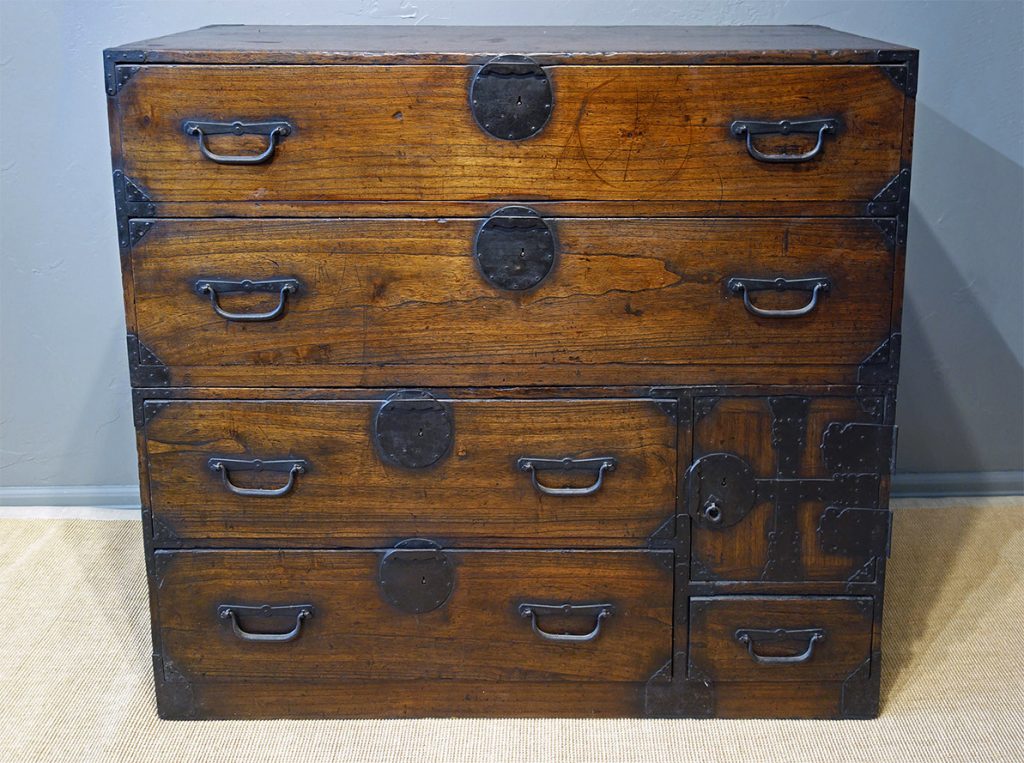 1880, paulownia wood, found in Korea after the Japanese Occupation of Korea; original old-fashion key survived. Certified.
1880, paulownia wood, found in Korea after the Japanese Occupation of Korea; original old-fashion key survived. Certified.

This chest has huge historical value. It was made in Japan but taken to Korea during the Japanese Occupation of Korea by a high-ranking Japanese official to store his clothes and documents and then left behind when Japan retreated. It was subsequently recovered by an esteemed American missionary doctor who went to Korea to treat the sick and the dying. He kept it and passed it later on to a Korean Professor of Korean History and Antiquity, one of only thirteen certifiers approved by the Korean government in the 1900s.
This chest has two long drawers in the upper part and two shorter ones below attached by a small storage compartment with two drawers inside, and a small drawer below it. All the drawers on this chest can be locked and all the iron fittings are original. An original old-fashioned key is recovered and can work on the drawers and lock-plate of the small storage compartment. This original key adds value to the piece as most furniture lost the key during the war. The sides have functional carrying handles through which a pole can be place in case the chest needs to be quickly moved in the event of fires and earthquake that frequently visit the Japanese islands.
The piece shows scratch marks in front and has some cracks in the back that are restored in Korea. These imperfections indicate the authenticity of this piece as an antique. It is certified by a Korean antique certifier.